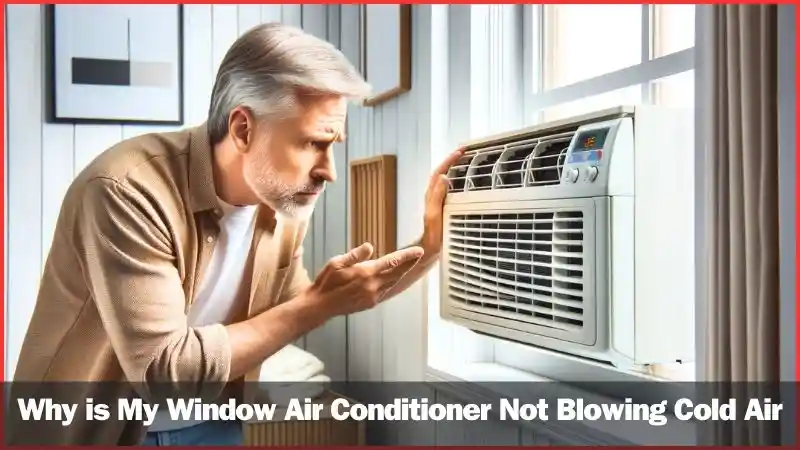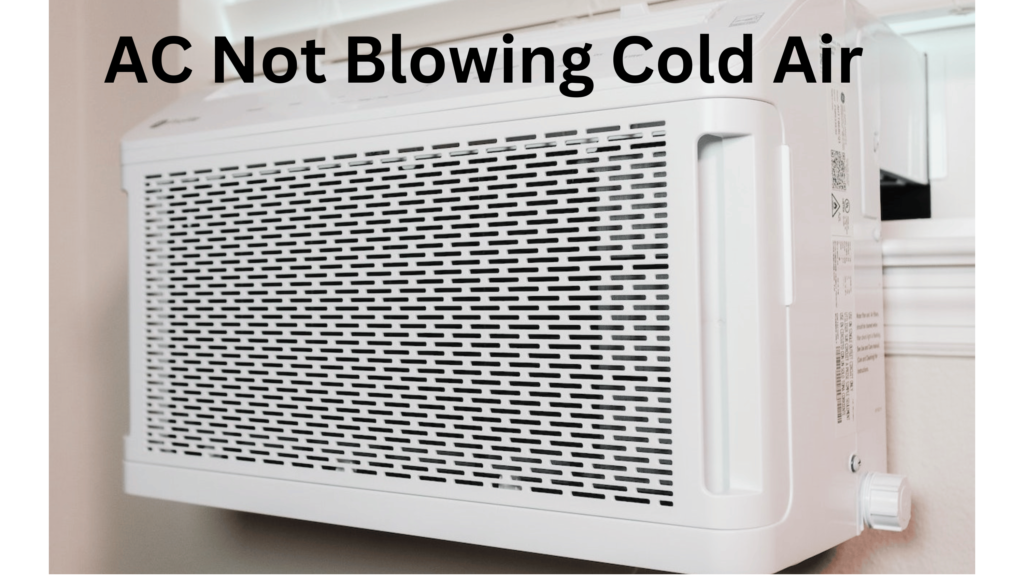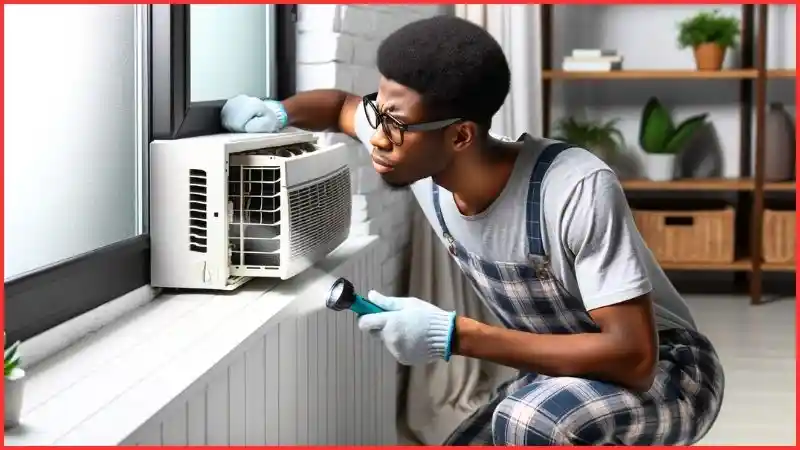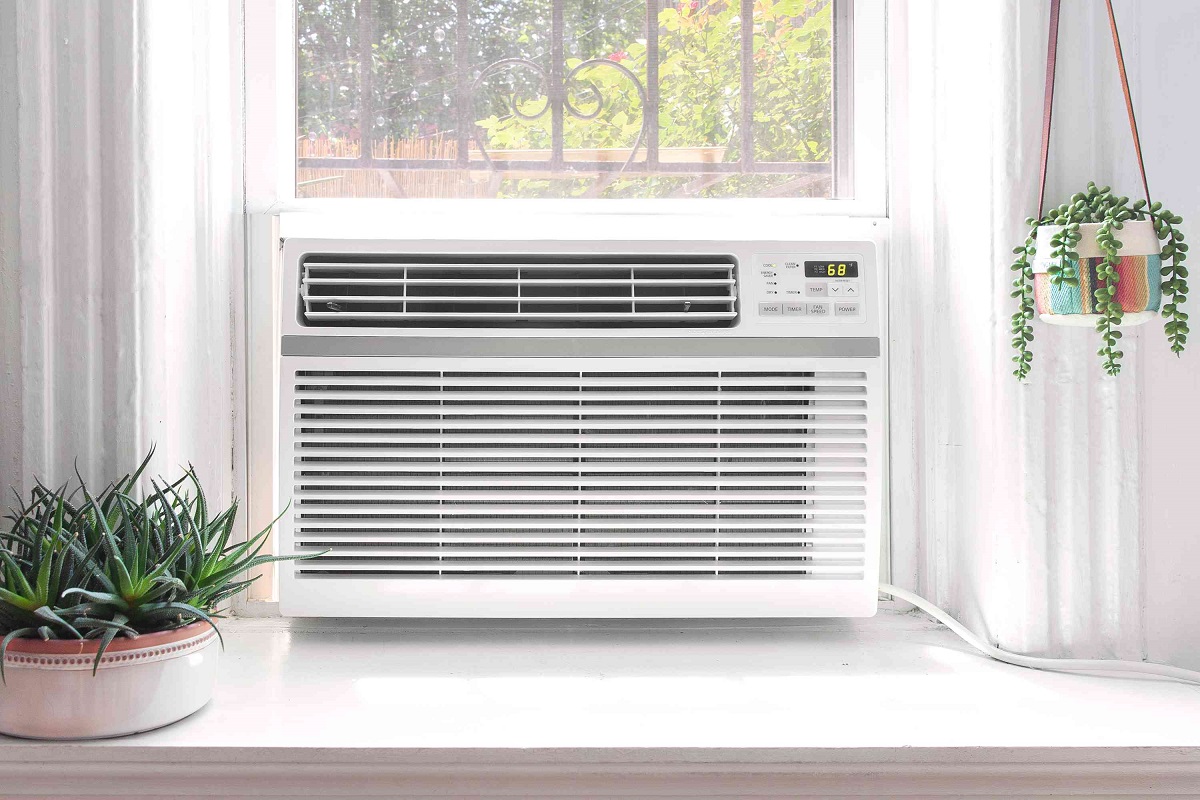Why Is My Window Ac Not Blowing Cold Air

Window air conditioners, a summertime staple for many, can suddenly stop blowing cold air, leaving you sweltering and frustrated. Before calling a repair technician, this article will guide you through a series of troubleshooting steps you can safely perform at home to potentially resolve the issue. Remember, safety is paramount. If at any point you feel uncomfortable or unsure about a step, especially involving electricity or complex parts, it's always best to contact a qualified professional.
Understanding the Problem
A window AC unit that's not blowing cold air could have several causes, ranging from simple user errors to more complex mechanical failures. Before diving in, take a deep breath and systematically assess the situation. Has it suddenly stopped working, or has the cooling performance been gradually decreasing? Identifying the symptoms can help narrow down the problem.
Step 1: The Obvious Checks - Power and Settings
Let's start with the basics. Sometimes the solution is simpler than you think.
Checking the Power Supply
- Verify the unit is plugged in securely. It sounds obvious, but a loose connection is a common culprit.
- Check the power outlet. Plug another appliance into the same outlet to confirm it's working. If the outlet is dead, check the circuit breaker or fuse box. A tripped breaker or blown fuse will need to be reset or replaced. Always turn off the breaker before attempting any electrical work.
- Inspect the power cord. Look for any signs of damage, such as cuts, frays, or exposed wires. A damaged power cord needs to be replaced immediately by a qualified electrician. Do not attempt to repair it yourself.
Confirming the Settings
- Is the AC unit turned on? Double-check that the power button is engaged.
- Is the thermostat set correctly? Make sure the thermostat is set to a temperature significantly lower than the current room temperature. If it's set too high, the AC might not turn on.
- Is the mode set to "Cool"? Some AC units have multiple modes (Cool, Fan, Dry). Ensure it's set to the "Cool" mode. The "Fan" mode will only circulate air, not cool it. The "Dry" mode is for dehumidifying and may not provide significant cooling.
- Check the fan speed. A low fan speed might make it seem like the air isn't cold enough. Increase the fan speed to see if it improves the cooling performance.
Step 2: Cleaning and Maintenance
A dirty AC unit is an inefficient AC unit. Regular cleaning is crucial for optimal performance.
Cleaning the Air Filter
- Locate the air filter. It's usually behind a removable panel on the front of the unit. Refer to your AC unit's manual for specific instructions.
- Remove the filter. Carefully slide it out of its housing.
- Clean the filter. You can vacuum the filter with a brush attachment or wash it with mild soap and water. Allow the filter to dry completely before reinstalling it. Never operate the AC unit without a filter, as this can damage the internal components.
- How often? Clean the air filter every two to four weeks, or more frequently if you live in a dusty environment.
Cleaning the Coils
The AC unit has two sets of coils: evaporator coils (inside the unit) and condenser coils (outside the unit). Dirty coils can significantly reduce cooling efficiency.
- Evaporator Coils: These coils are located behind the filter. After removing the filter, inspect the coils for dust and debris. Use a vacuum cleaner with a brush attachment to gently remove any buildup. You can also use a fin comb (available at most hardware stores) to straighten any bent fins. Be very careful not to damage the delicate fins.
- Condenser Coils: These coils are located on the exterior part of the unit. Unplug the AC unit before cleaning the condenser coils. Use a soft brush or vacuum cleaner to remove any dirt, leaves, or debris that may be blocking airflow. You can also use a garden hose with a gentle spray nozzle to rinse the coils. Avoid using high-pressure spray, as this can damage the fins. Make sure the coils are completely dry before plugging the unit back in.
Step 3: Checking for Obstructions
Airflow is essential for proper cooling. Ensure nothing is blocking the AC unit.
Inside the Room
- Check for obstructions in front of the unit. Make sure curtains, furniture, or other objects aren't blocking the airflow.
- Ensure proper ventilation. Keep doors and windows closed in the room being cooled to prevent warm air from entering.
Outside the Unit
- Check for obstructions around the exterior part of the unit. Remove any plants, debris, or other objects that may be blocking airflow.
Step 4: Addressing Ice Formation
Sometimes, the AC unit may not blow cold air because the coils are frozen over. This can happen due to several reasons, including low refrigerant levels or restricted airflow.
- Turn off the AC unit. Let the ice melt completely. This may take several hours.
- Check the air filter. A dirty air filter can restrict airflow and contribute to ice formation. Clean or replace the filter as described in Step 2.
- Check for obstructions. Ensure nothing is blocking the airflow around the unit, as described in Step 3.
- If the problem persists: If the unit continues to ice up after cleaning the filter and removing obstructions, it may indicate a more serious problem, such as low refrigerant levels. Contact a qualified HVAC technician to diagnose and repair the issue.
When to Call a Professional
While many issues can be resolved with simple troubleshooting, some problems require the expertise of a qualified HVAC technician. Here are some situations where you should call a professional:
Refrigerant Leaks
If you suspect a refrigerant leak (e.g., you notice a sweet, oily smell near the unit, or the unit consistently freezes up), do not attempt to repair it yourself. Refrigerant handling requires specialized equipment and training. Leaking refrigerant is also harmful to the environment. A professional can safely repair the leak and recharge the system.
Electrical Issues
If you experience any electrical issues, such as sparks, burning smells, or the unit repeatedly tripping the circuit breaker, do not attempt to diagnose or repair the problem yourself. Contact a qualified electrician immediately. Electrical repairs can be dangerous and should only be performed by trained professionals.
Compressor Problems
The compressor is the heart of the AC unit. If it's malfunctioning, the unit will not cool properly. Diagnosing and repairing compressor problems requires specialized knowledge and equipment. Contact a qualified HVAC technician for assistance. Signs of compressor failure include unusual noises, the unit not turning on, or weak airflow.
Complex Mechanical Failures
If you've tried the basic troubleshooting steps and the AC unit still isn't blowing cold air, it may indicate a more complex mechanical failure. Contact a qualified HVAC technician to diagnose and repair the problem.
Preventative Maintenance Tips
Regular maintenance can help prevent problems and extend the life of your window AC unit.
- Clean the air filter regularly. As mentioned earlier, clean the air filter every two to four weeks.
- Clean the coils annually. At least once a year, clean the evaporator and condenser coils.
- Inspect the unit for leaks or damage. Periodically inspect the unit for any signs of leaks, damage, or wear and tear.
- Consider a professional tune-up. Schedule a professional tune-up every few years to ensure the unit is running efficiently and identify any potential problems early on.
- Proper Storage: When the cooling season is over, properly store your window AC unit. Clean it thoroughly, cover it with a protective cover, and store it in a dry place. This will help prevent dust and debris from accumulating inside the unit and protect it from damage.
Conclusion
By following these troubleshooting steps, you can often diagnose and resolve common problems with your window AC unit. Remember to prioritize safety and call a professional when dealing with electrical issues, refrigerant leaks, or complex mechanical failures. With regular maintenance and prompt attention to problems, you can keep your AC unit running efficiently and enjoy cool comfort throughout the summer.










